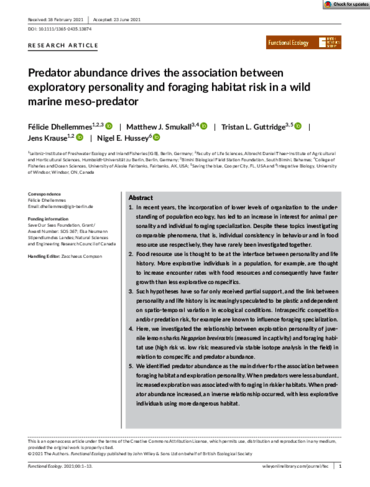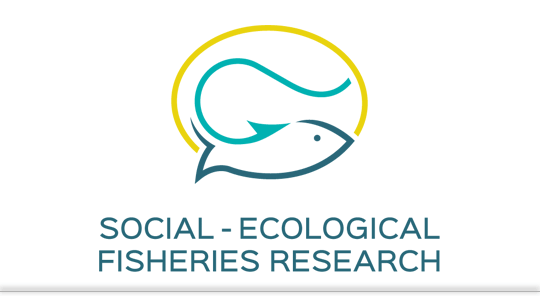In recent years, the incorporation of lower levels of organization to the understanding of population ecology, has led to an increase in interest for animal personality and individual foraging specialization. Despite these topics investigating comparable phenomena, that is, individual consistency in behaviour and in food resource use respectively, they have rarely been investigated together. 2. Food resource use is thought to be at the interface between personality and life history. More explorative individuals in a population, for example, are thought to increase encounter rates with food resources and consequently have faster growth than less explorative conspecifics. 3. Such hypotheses have so far only received partial support, and the link between personality and life history is increasingly speculated to be plastic and dependent on spatio-temporal variation in ecological conditions. Intraspecific competition and/or predation risk, for example are known to influence foraging specialization. 4. Here, we investigated the relationship between exploration personality of juvenile lemon sharks Negaprion brevirostris (measured in captivity) and foraging habitat use (high risk vs. low risk; measured via stable isotope analysis in the field) in relation to conspecific and predator abundance.
5. We identified predator abundance as the main driver for the association between foraging habitat and exploration personality. When predators were less abundant, increased exploration was associated with foraging in riskier habitats. When predator abundance increased, an inverse relationship occurred, with less explorative individuals using more dangerous habitat.
Predator abundance drives the association between exploratory personality and foraging habitat risk in a wild marine meso-predator
Peer-reviewed

Dhellemmes, F., Smukall, M. J., Guttridge, T. L., Krause, J., Hussey, N. E. (2021). Predator abundance drives the association between exploratory personality and foraging habitat risk in a wild marine meso-predator. Functional Ecology, 2021, 00:1-13.
Published
: 2021
Appeared in
: Functional Ecology, 2021, 00:1-13
